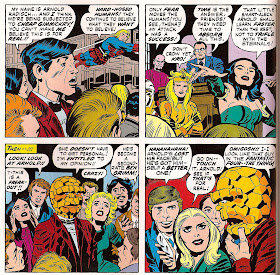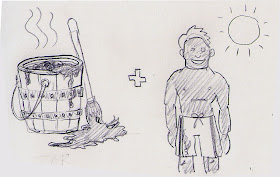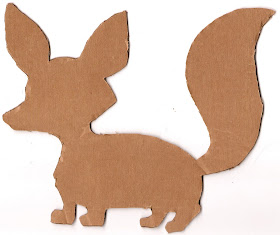A few days ago, I posted an odd
mostly-magenta panel that Mike quickly pegged as a Kirby swipe. Now it's time to tip my hand and reveal what I have been reading this week.
I'm actually still making my way slowly through this, but it's a collection of the first eleven issues of Kirby's mid-'70s
von-Däniken-influenced post-Fourth-World return-to-Marvel
Eternals.
Who are the Eternals? Well, you see, in the time before human history, a cadre of titanic aliens (the Celestials) visited Earth and, from a single common ancestor, derived three races. The humans, you're already familiar with. The Deviants, whose genes are so unstable that every one of them is grotesquely different, have lived on the bottom of the ocean for centuries, since the destruction of Lemuria. And the Eternals are a bunch of undying and beautiful humanoids who meditate on the top of mountains, perfecting their superhuman mental gifts.
It's kind of high-concept.
When the series begins, the only human record of the Eternals, the Deviants, or the Celestials is in our ancient mythology. And then, just as a human archaeologist discovers an Inca ruin that depicts their presence, the Celestials return. The archaeologist's guide and assistant, Ike Harris, reveals himself to be in fact the Eternal master of flight, Ikaris, and suddenly massive wheels are in motion. The Celestials will observe the planet for fifty years, then judge it.
To Kirby's credit, the Eternals that we meet really do have the personalities of immortal semi-gods. They're either prone to pranks and hijinks, bored with their interminable lives, or pompous and portentous in their over-seriousness. (Ikaris tends toward the latter disposition, but Sersi, Makkari, and Sprite are all rascals.) And not even the most sober of them is incapable of irony.

Please click to enlarge and read that dialogue. The "raiment" that Ikaris has assumed is really anything but simple: it's a phantasmagoria of
Kirbyesque design, and it's hard to imagine drawing this a hundred times...

Ikaris isn't the only sartorially complex Eternal. Consider
the haberdasher who cooked
this up:

Once the Deviants find out that the Celestials have arrived, they decide they need to provoke humanity to attack the space gods. (The Deviants fought the Celestials before, and that's why they live under the ocean now.)
So a bunch of Deviants dress up like "Space Devils"—I
told you this was high-concept—and attack Manhattan.



There's Kro, the Deviants' general, dressed up as Space Satan. He's the guy I was drawing in my teaser panel.
It turns out that humanity is pretty easy to convince, on this score...

...and this is something I'd like to return to in a moment.
Eternals is fun because it gives Kirby room to imagine a new mythology, and because it gives him a chance to draw some incredibly crazy things. The Celestials are mountainous in size, and one of them (Arishem) carries the formula for world decimation on his brobdignagian thumb:

Yes, click to enlarge there. Arishem wouldn't fit on my scanner.
It seems pretty clear from the first five issues that
Eternals doesn't happen in the
regular Marvel universe. The story wouldn't make any sense there. Humanity is totally unaware of beings with superhuman powers living among them. The Eternals, not the
various pantheons of gods, are the source of mankind's myths. Margo Damian panics when Ikaris, dressed in his bold-colored togs, jumps out of her plane and flies. When weird-looking guys in spacesuits start burning up New York, everyone assumes that it's the Devil, not the Skrulls. This can't be the world where The Fantastic Four fended off Galactus.
And yet, in
the sixth issue, a skeptic named Arnold Radisch becomes the victim of an odd prank...

... and on the very next page, three well-equipped field agents are identified as "Nick Fury's men." From this point forward, the Eternals are in the same continuity as the Inhumans, Starfox can join the Avengers, Kro's kids can hobnob with Iron Fist, and Ajak can shoot pool with Beta Ray Bill or something.
I'd like to know what brought the Eternals into the Marvel universe. I wonder whether this was Kirby's decision, or something that came from Archie Goodwin, the book's editor. Anyone out there know more about this?




































